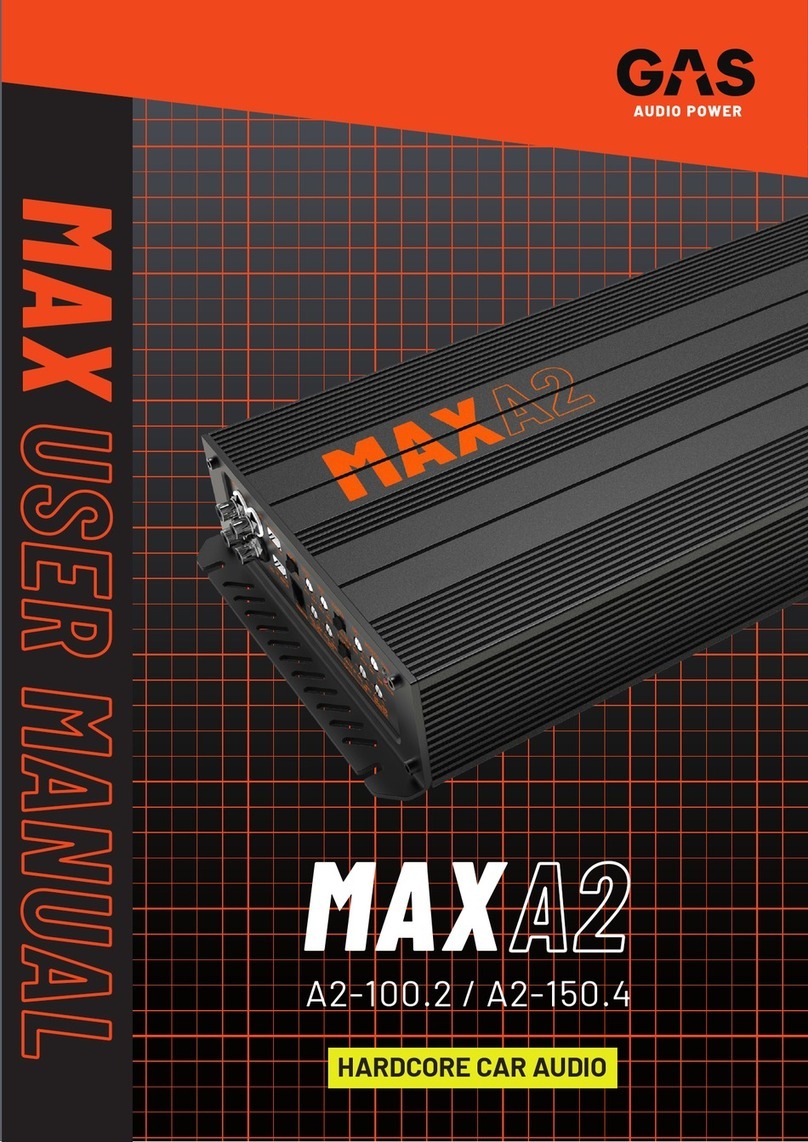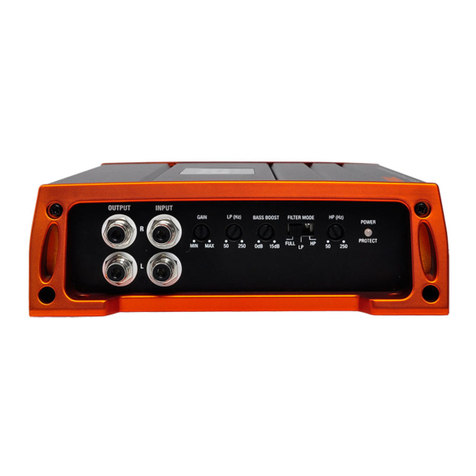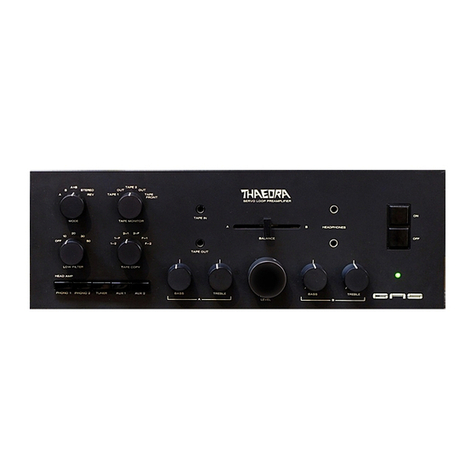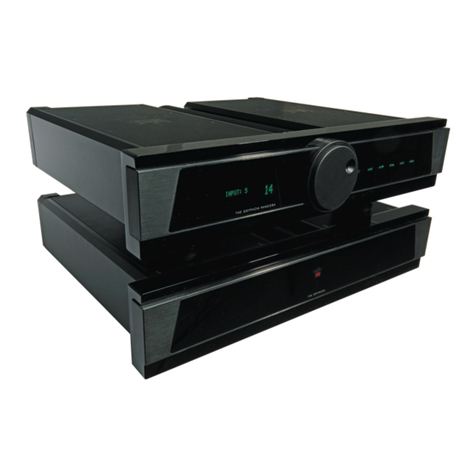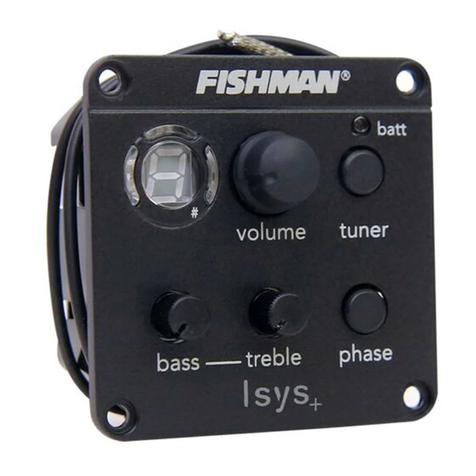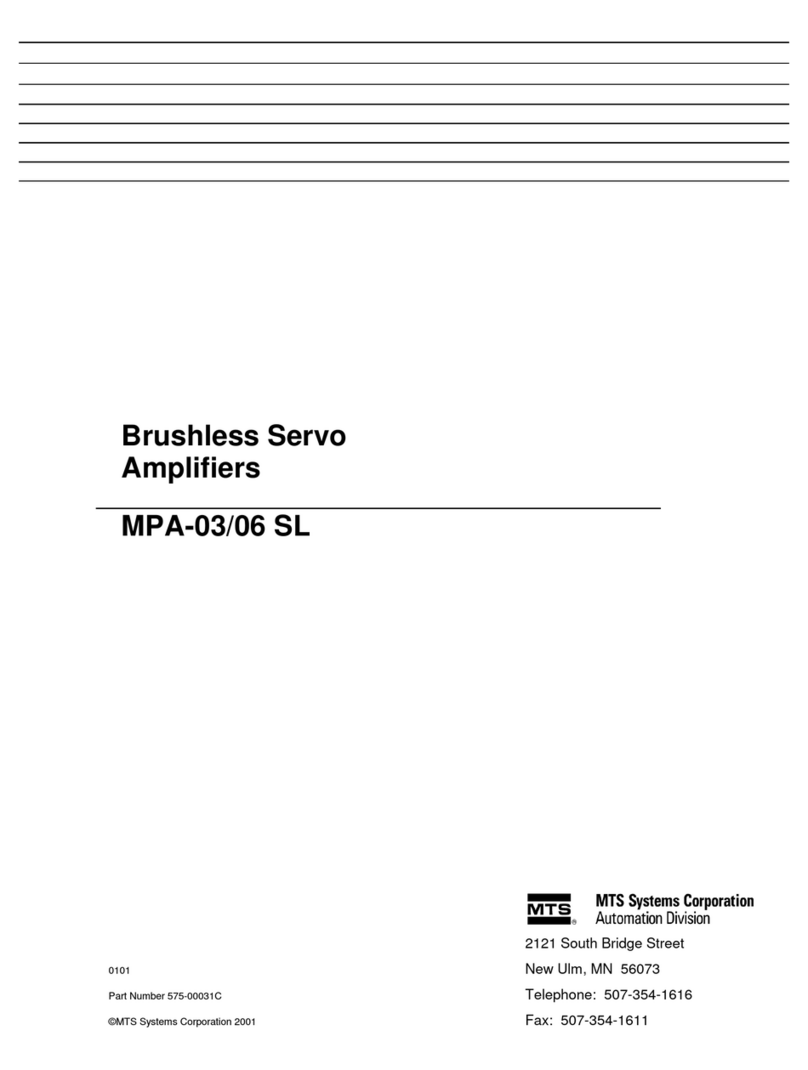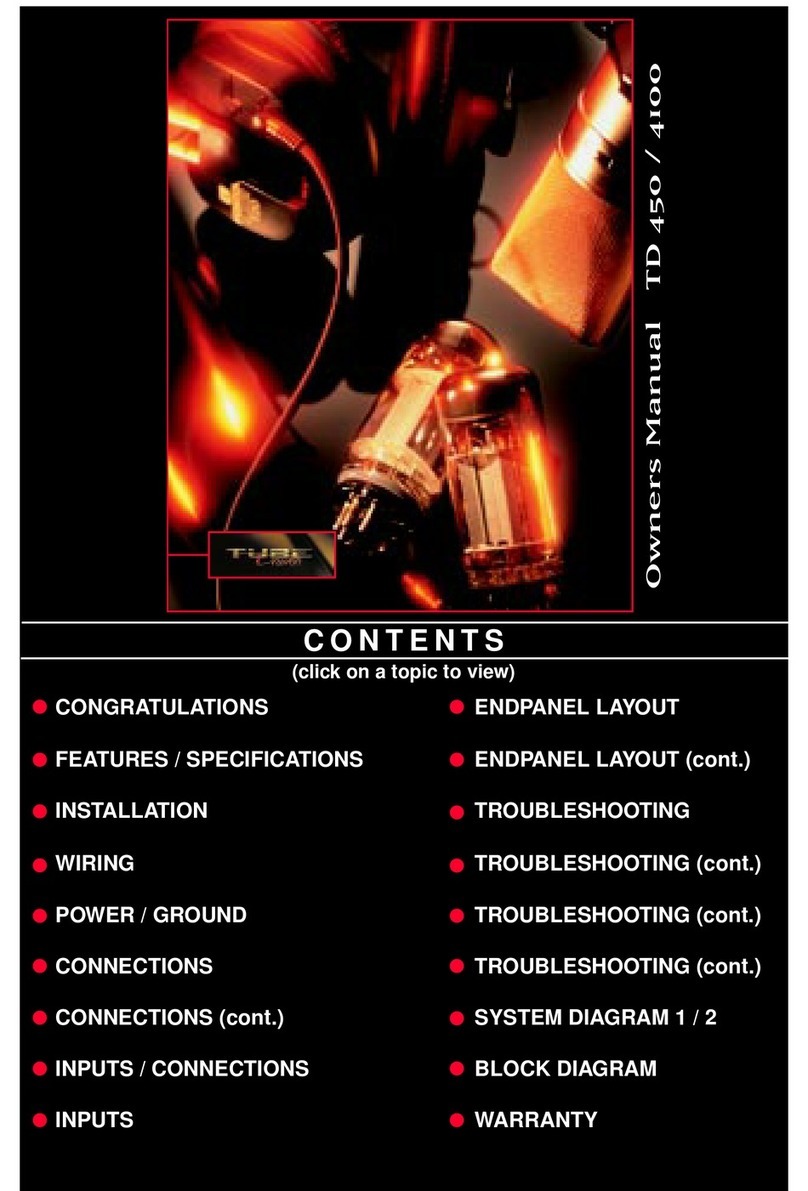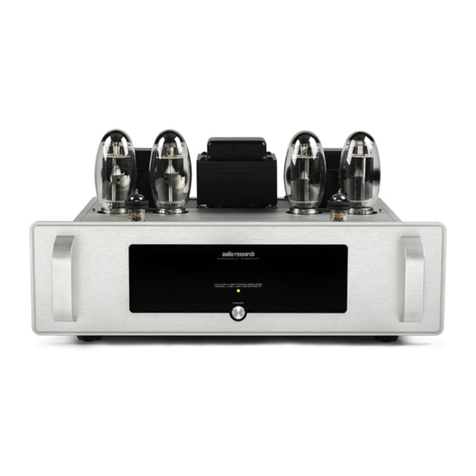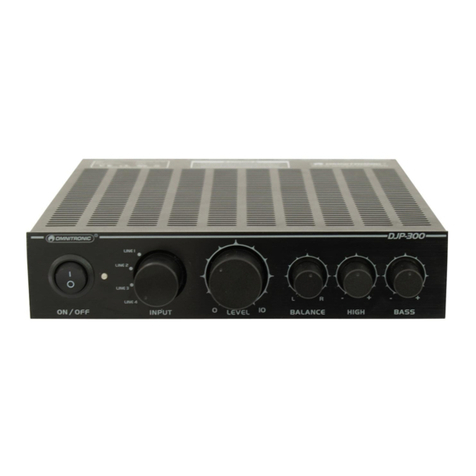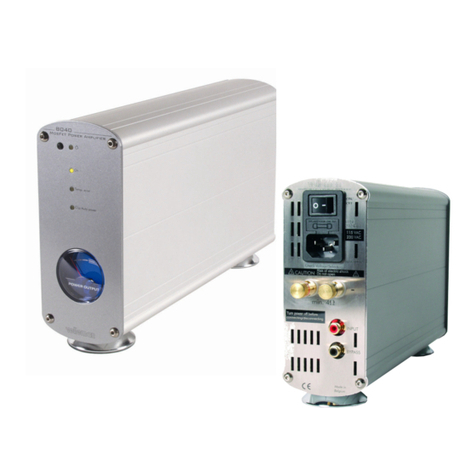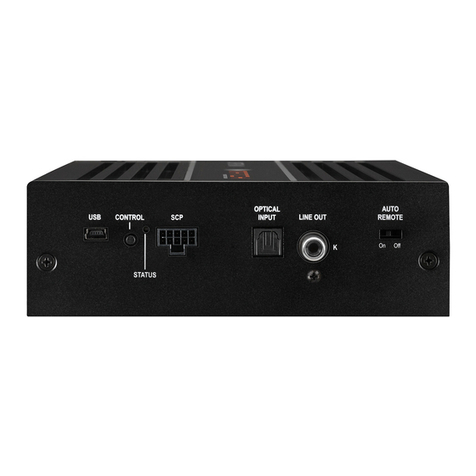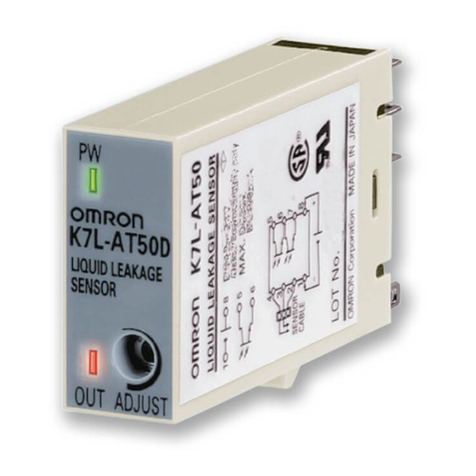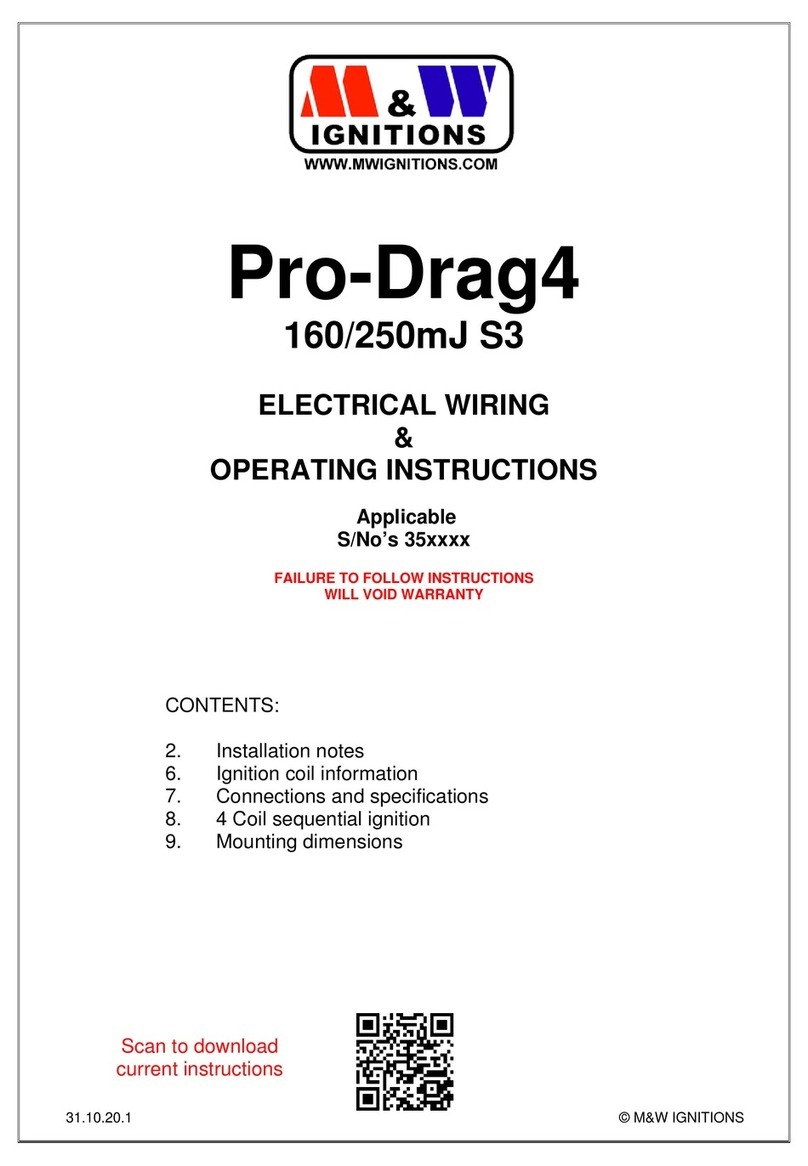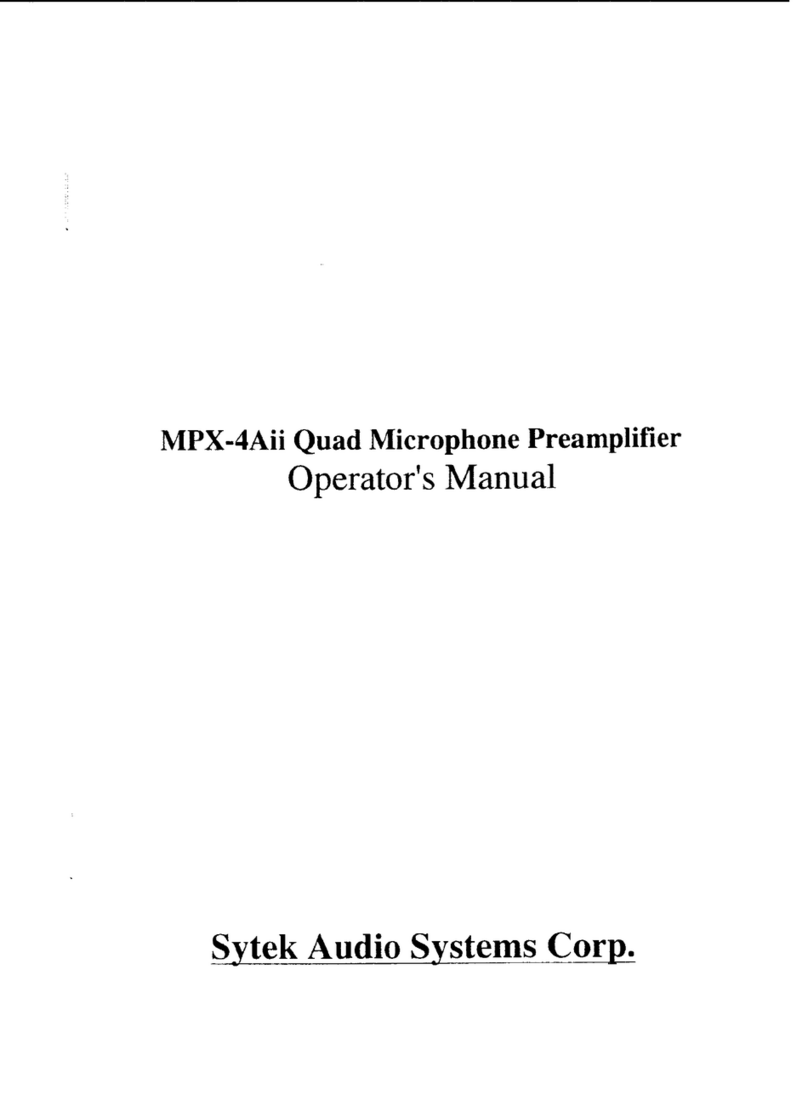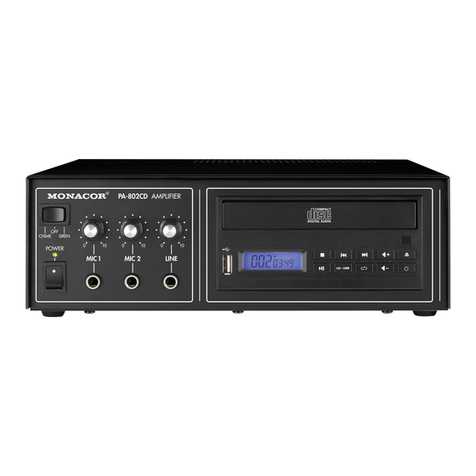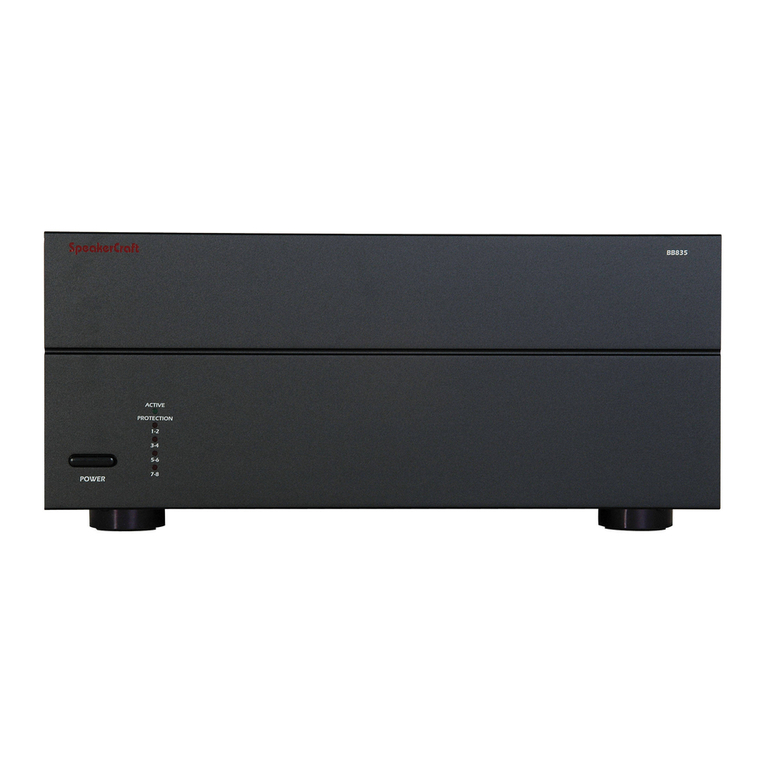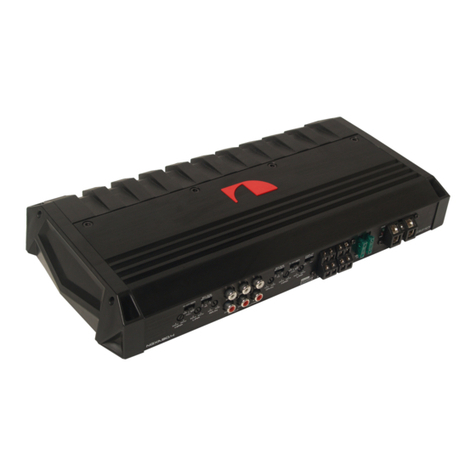GAS MAD A1 User manual

MAD
MADE TO PLAY LOUD
A1-70.2 / A1-70.4
MAD

WE PLAY LOUD!!
We know what you want. You want it LOUD, and that’s
exactly what we do, what we live for. Vibrations,
gut-punches and straight up loud music - that’s what
makes us tick. We won’t dress up in fancy words or
claim to be something we’re not. We are the NO
BULLSH!T car audio brand!
Every single product with the GAS logo on it is born
out of passion, the same that has driven us for two
generations and that will keep us rolling up to your
neighbourhood, winning and pushing the limits for
many generations to come!
It’s up to you to choose your own level of loud, and if
you don’t like what we do that’s OK. You are welcome
We don’t exclude, we don’t judge and we do not make
up any excuses for who we are.
We are GAS and we are proud to be LOUD!

TABLE OF CONTENT
SAFETY..................................................................................................
UNPACKING........................................................................................
DIMENSIONS..............................................................................................
SPECIFICATIONS.................................................................................
MAD A1-70.2.....................................................................................
MAD A1-70.4.....................................................................................
Recommended cable sizes...............................................................
FUNCTIONS..............................................................................................
Indicator / HPF / Crossover..............................................................
LPF / Input / Output..........................................................................
Bass EQ / Level / Ground / Remote....................................................
Power / Fuse / Speaker outputs........................................................
HOW TO.........................................................................................................
Install amplier................................................................................
Connect speakers............................................................................
Tweaking & settings.........................................................................
TROUBLESHOOTING......................................................................................
No power..........................................................................................
No sound..........................................................................................
Unwanted noise...............................................................................
Distortion....................................................................................
Protection...................................................................................
WARRANTY & DISPOSAL...............................................................................
THE GAS WORLD...........................................................................................
3
4
4
5
5
5
6
7
7
8
9
10
11
10
16
18
23
23
23
23
23
23
24
25

SAFETY
3
Make sure to pay attention to the instructions when you see this symbol:
Make sure that your vehicle has a 12 VDC voltage negative ground system, that it can
handle an increased power consumption, and that both the alternator and the power
source are healthy and up to the task.
Don’t install the amplier inside the engine compartment or any other surface that
may be compromised by water or dirt. Your amplier will produce heat so make sure
it’ll have sucient air circulation (4-5cm open space on all sides).
Keep the cables inside the vehicle separate from sharp edges or components that may
be affected or take damage. Follow the recommended cable sizes and always use high
quality cables and accessories. Even if you are eager to put the amplier to use – take
no shortcuts when installing the cables, make sure that all connectors are protected
and secured, and take your time nding the perfect grounding point.
Don’t drill any holes without checking what lies beneath, and don’t cut anything
without making sure that no important components risk being damaged.
There’s a rst time for everything, if you need help - ask a friend or contact your local
GAS AUDIO POWER dealer/installer.
We want you to experience your product’s MAD sound, but we don’t want you to injure
yourself or others. Use common sense, respect high pressure levels and volume, and
follow your local laws and regulations.
you read through the manual thoroughly and follow the instructions. Save the
manual for future usage and reference!

UNPACKING
We know you’re excited to dive head rst into installing your new amplier, but before you
do: Make sure that the amplier and all the accessories are included in the packaging.
4
DIMENSIONS
A
B
C
E
D
A1-70.2
A1-70.4
A B C D E
mm
mm
252
312
232
292
195
195
209
209
55
55
Amplier
(1pc)
Manual
(1pc)
Screws
(4pcs)
Fuses
(1 or 2pcs)
HI input cable
(1pc)

SPECIFICATIONS
5
We take pride in our work! True, honest specications and power ratings are an important
part of all ampliers. Listening, measuring and engineering are essential parts in our
workshop. That’s how we make sure to bring you an awesome product with NO BULLSH!T.
Component
Topology
Class AB
MAD A1-70.2
Channels Two
Input mode
Power RMS (4 Ohm)*
Bridged Power RMS (4 Ohm)*
Frequency response
Low Pass Filter
High Pass Filter
Power RMS (2 Ohm)*
2 Ch
2x70W
1x220W
15-22000Hz
50-4000Hz
50-4000Hz
2x105W
S/N ratio (A-weighted)
Bass EQ
>98dB
0-12dB @ 45Hz
Crossover slope
Power/REM voltage
12dB
10-16V
Input sensitivity 0.5-6V
T.H.D
Damping Factor
<0.5%
>130
Power Fuse 1x35A
High level input
RCA line out
Yes/ATO
Yes
CLIP Yes
Bass Remote N/A
Linkable N/A
Component
Topology
Class AB
MAD A1-70.4
Channels Four
Input mode
Power RMS (4 Ohm)*
Bridged Power RMS (4 Ohm)*
Frequency response
Low Pass Filter
High Pass Filter
Power RMS (2 Ohm)*
4 Ch
4x70W
2x220W
15-22000Hz
50-4000Hz
50-4000Hz
4x105W
S/N ratio (A-weighted)
Bass EQ
>98dB
0-12dB @ 45Hz
Crossover slope
Power/REM voltage
12dB
10-16V
Input sensitivity 0.5-6V
T.H.D
Damping Factor
<0.5%
>130
Power Fuse 2x35A
High level input
RCA line out
Yes/ATO
Yes
CLIP Yes
Bass Remote N/A
Linkable N/A
*Guaranteed Minimum Certied
Power @ 14.4V >1% THD
*Guaranteed Minimum Certied
Power @ 14.4V >1% THD

SPECIFICATIONS
6
Power cable 8AWG (10mm
Speaker cable
REM cable
4AWG (20mm
14AWG (1,5mm 12AWG (4mm
18AWG (0,75mm 12AWG (4mm
Power cable 4AWG (20mm
Speaker cable
REM cable
4AWG (20mm
14AWG (1,5mm 12AWG (4mm
18AWG (0,75mm 12AWG (4mm
RECOMMENDED MINIMUM SIZE MAX SIZE
MAD A1-70.2
RECOMMENDED MINIMUM SIZE MAX SIZE
MAD A1-70.4
RECOMMENDED CABLE SIZES

The MAD ampliers are made for the people out there who don’t care about the haters, we
are proud to play LOUD! But to play LOUD you need a lot of power, which is why you have
bought this awesome A1 amplier. We know you’re itching to start building your new sound
system, but make sure to read through these pages - so you can get the most out of your
drivers! Take note that the feature placement might differ between the amplier models.
7
FUNCTIONS
POWER/PROTECT INDICATOR
Example: A1-70.2
POWER - PROTECT.
Power = Glows white
when the amplier is
connected and on.
Protect = Glows red
when the amplier in-
dicates a failure.
If it glows red, read
TROUBLE SHOOTING.
Example: A1-70.2
Follow the HOW
TO instructions
HPF. Limits the output
below selected freq-
uency.
HIGH PASS FILTER
CLIP INDICATOR
Example: A1-70.2
CROSSOVER
MODE. Choose the type
of crossover to use:
High pass, Fullrange or
Low pass setting.
Example: A1-70.2
Follow the HOW
TO instructions
CLIP. When distortion
exceeds 1%, the CLIP
indicator glows orange.
If it glows static, read
HOW TO instructions.

8
FUNCTIONS
LOW PASS FILTER
LPF. Limits the output
above selected freq-
uency.
Example: A1-70.2
Follow the HOW
TO instructions
HIGH LEVEL INPUT
HI INPUT. Used instead
of low level input/RCA to
connect speaker output
directly to the head unit.
Never use high level
and low level input
at the same time!
Example: A1-70.2
LOW LEVEL OUTPUT
OUTPUT Left - Right.
Send original signal to
a second amplier.
Example: A1-70.2
LOW LEVEL INPUT
INPUT Left - Right.
Connects to your head
unit’s RCA outputs.
Example: A1-70.2

9
FUNCTIONS
BASS EQ
BASS EQ. Boosts the
bass at 45Hz, Variable
between 0-12dB.
Follow the HOW
TO instructions
Example: A1-70.2
LEVEL (GAIN)
LEVEL. Sync your head
unit’s output signal
with the amplier.
Follow the HOW
TO instructions
Example: A1-70.2Example: A1-70.2
GROUND
GND. Terminal input
connector for ground
cable ( - power cable).
The GND cable must
be in direct contact
to the vehicle chassis
or the power source’s
neg. (-) binding post.
REMOTE
REM. Terminal input
connector for the unit
that controls the turn-
on signal.
Example: A1-70.2

10
FUNCTIONS
Example: A1-70.2
POWER
BATT +12V. Terminal in-
put connection for +12V
cable (+ power cable).
Make sure the vehicle
use a 10-16V power
source and electrical
system.
FUSES
FUSE. Protects your
amplier from major
damage in case of a
power failure.
Which fuse type the
amplier uses is in
the SPECIFICATION.
Example: A1-70.2
SPEAKER OUTPUTS
SPEAKER OUTPUT.
Connect subwoofer /
subwoofers to the
amplier.
Connect positive &
negative output to
the equivalent con-
nector on subwoo-
fer / subwoofers.
Example: A1-70.2

A well-built sound system will set you aside from the rest and elevate your vehicle! It’s
important that you carefully read the instructions on the following pages. This is to make
sure that you install and use the amplier correctly, so your system is as LOUD as possible!
11
INSTALL AMPLIFIER
HOW TO
Make sure your vehicle is up to task. You need a 12VDC negative ground electric system
and the power source and the alternator should be fully functional and healthy.
Disconnect and secure the negative terminal from your
power source to eliminate the risk of damaging your-
self or the products. Place the negative terminal in a
secure position so that it won’t accidentaly contact
the positive or the negative power source post.
Better safe than sorry! Find a location that has a normal temperature and is safe
from rain, excessive moisture and dirt when you’re going to install your amplier.
65-85 AMP
50-65 AMP
35-50 AMP
20-35 AMP
0-20 AMP
225-300 AMP
150-225 AMP
125-150 AMP
105-125 AMP
0-1m 1-2m 2-3m 3-4m 4-5m
85-105 AMP
5-6m 6-7m 7-8m
Have all the necessary tools ready and close at hand. Make sure that the needed wiring
accessories are prepared. Your wiring kit should be of the recommended size
depending on the specic amplier (see the SPECIFICATION chapter).
Cable
size:
A.W.G: 0 Gauge
MM²: 50mm²
A.W.G: 2 Gauge
MM²: 35mm²
A.W.G: 4 Gauge
MM²: 20mm²
A.W.G: 10 Gauge
MM²: 6mm²
A.W.G: 8 Gauge
MM²: 10mm²

It’s time to nd the perfect location to place your amplier! Since the amplier produces
heat you don´t want to install it where it might get overheated. Find a place where air can
circulate around it to stay cool. Also leave enough space so it´s easy to connect your cables
and reach for the controls. Don´t bolt the amplier to your vehicle chassis (if this is your only
option, you need to isolate the amplier from the screws).
12
HOW TO
Find the best way to run the cables through your vehicle! This might take some time, and may
vary between different models. Preferably the cables shouldn’t be visible when you’re
nished and they shouldn’t be placed in a way that they obstruct any of the vehicle’s
functions or hinder you from operating the vehicle safely. It’s also important you don’t run
the power cable together with the signal cable, since this can cause interference.
Connect the power cable to the positive power source terminal, preferably together with the
vehicle +12V cable. A fuse holder needs to be placed on the cable at a 15-25 cm distance
from the terminal and before any steel parts. WARNING! Install the fuses as the absolute
nal step when the rest of the installation is complete.
The next step is to run a remote wire from your head unit to the amplier, preferably
together with the power cable (see illustration below). Use a separate 14-18 AWG wire for
the remote signal. You also need a high quality RCA signal cable. To make sure there’s no
interference, the RCA cable should be run as far away from the power cables as possible,
preferably on the opposite side of the vehicle (see illustration below).
RCA cable
Grounding is ESSENTIAL! The ground cable must be in
direct connection with the vehicle’s metal frame. So take
your time nding the perfect bolt or area for this. There
should be no paint or dirt preventing a clean connection,
so scrape down the area where the ring terminal
touches/is in contact with the frame.
Remote and
power cable

If you don’t have any RCA outputs on your head unit you can use the high level input function.
Use the included HI input cable. This will connect the speaker output of the head unit
directly to the amplier.
13
HOW TO
Use the right speaker cable for the job! Make sure to use the recommended size, and follow
the polarity of the speaker wire from the speaker to the amplier.
Left -
GND
Right -
Right +
WHITE/BLACK CABLE
BLACK CABLE
GREY/BLACK CABLE
GREY CABLE
Left +
WHITE CABLE MAD A1-70.2 MAD A1-70.4
GND
Right -
Right +
BLACK CABLE
GREY/BLACK CABLE
GREY CABLE
Left +
Left -
WHITE CABLE
WHITE/BLACK CABLE
GND
Right -
Right +
BLACK CABLE
PURPLE/BLACK CABLE
PURPLE CABLE
Left +
Left -
GREEN CABLE
GREEN/BLACK CABLE
See the SPECIFICATION chapter for recommended cable sizes. You can also look through
the table on the following page to nd your minimum recommended size for speaker cables.
Speaker cables

14
HOW TO
900 W
600 W
450 W
300 W
150 W
3000 W
2500 W
2000 W
1500 W
0-1m 1-2m 2-3m 3-4m 4-5m
1200 W
5-6m 6-7m 7-8m
100 W
50 W
Cable
size:
A.W.G: 12 Gauge
MM²: 4mm²
A.W.G: 14 Gauge
MM²: 2,5mm²
A.W.G: 16 Gauge
MM²: 1,5mm²
We’re almost there! Are you ready? When all cables have been installed with fork terminals
and secured with cable ties and wire looms, you’re ready to start up your system.
Follow the instructions on your amplier and/or in the manual to make sure that each
cable is connected to the correct output and input. WARNING! Make sure that any Bass EQ
function is set to a minimum, that the level/gain is set to a minimum and all crossovers are
turned off/set to default.
Install the fuses in the fuse holder and reconnect
the negative power source terminal. Be pre-
paredtodisarm yourvehicle’s alarm andtoenter
your radio/source unit code.

15
HOW TO
Time to test it out! Turn the ignition on your vehicle and turn the source/head unit on. Make
sure that the amplier’s power indicator is on and shows that there’s power coming all the
way through, if not – turn the head unit off, the ignition off, disconnect the negative power
source terminal and re-check all your connections.
One last thing... We know you are ready to show off your upgraded sound system to the
world, but before you reattach all panels and put the head unit back in place, do a nal
check. Make sure that all the speakers have a signal by playing some really good music,
turning the head unit volume up just a bit, and just slightly turning the level/gain on the
amplier. WARNING! Do not turn the level/gain more than to just hear the music (read
through the HOW TO-section on setting the level/gain before further use).

16
HOW TO
CONNECT SPEAKERS
Make sure you got everything you need when connecting your subwoofers/speakers to your
sound system’s new powerhouse. Depending on what amplier you have, and what type of
speaker you want to connect, there are a few different ways to make the right connections.
Make sure to have the correct load on your amplier, going below specied impedance
will damage your amplier. Usually you can nd the speaker’s impedance in their manual.
TWO CHANNEL AMPLIFIER
Two speakers (impedance per channel minimum 2 Ohm):
One bridged woofer (impedance minimum 4 Ohm):

17
HOW TO
FOUR CHANNEL AMPLIFIER
Four speakers (impedance per channel minimum 2 Ohm):
Two bridged woofers (impedance minimum 4 Ohm):

18
HOW TO
TWEAKING & SETTINGS
The devil is in the details. Tweak the settings on your MAD amplier using the following
recommendations and cross the line that separates the average user from the hardcore
high-power audio junkie!
LEVEL (GAIN)
Example: A1-70.2
Remember that the level/gain setting is not a volume control! It’s there to let you sync your
head unit’s output signal with the amplier.
Every sound system is different, and there are several ways to set the amplier level/gain.
To get started you can use your own senses and audio skills by following the instructions
below. On the following page we also tell you how to set the level/gain with an oscilloscope.
Use your own senses and audio skills
If you are planning to set the level/gain by hand, do so in a quiet environment. The more
experience you have in making this sort of settings, the easier it is to get a good result. If
you haven’t done this before, a tip is to ask a friend to help you out.
• Set the level/gain to minimum.
• Set the volume on your head unit to 75%.
• Start to play your favourite track that you are really familiar with and knows the sound of
by heart, or use the test tones on a sine-wave test CD or digital test track.
• Slowly start to increase the level/gain.
• When you see the orange clip LED turn on and start ickering you will hear that the sound
starts to change and you can note distortion. Stop the level/gain adjustment and turn the
level/gain down slightly until the clip LED turns off.
• You have now set the level/gain on your amplier correctly.

19
HOW TO
Use an oscilloscope for high precision result
When you are setting the level/gain on your amplier with an oscilloscope you are
measuring the output power of the amplier. WARNING! Make sure that the positive
speaker cable is removed from the amplier.
Set the level/gain to minimum. Start a CD/digital sine-wave test track with your head unit’s
volume level at 75% and set the oscilloscope to AC Volts.
Connect the test probes on the amplier’s speaker terminals. When you’re connected, you
will see soundwaves on the oscilloscope. The soundwaves should be moving in a steady
pattern with smooth tops and bottoms.
While observing the oscilloscope, start to slowly increase the level/gain until you start to
see irregulations in the soundwaves. When the waveform is starting to look squared, turn
down the level/gain until the waveform is back to smooth curves (see the graphics below).
GOOD WAVEFORM BAD WAVEFORM
Remember – if you use your BASS EQ or any other sort of amplitude enhancement functions
after setting the level/gain, you will have to do it all over again!
This manual suits for next models
2
Table of contents
Other GAS Amplifier manuals
